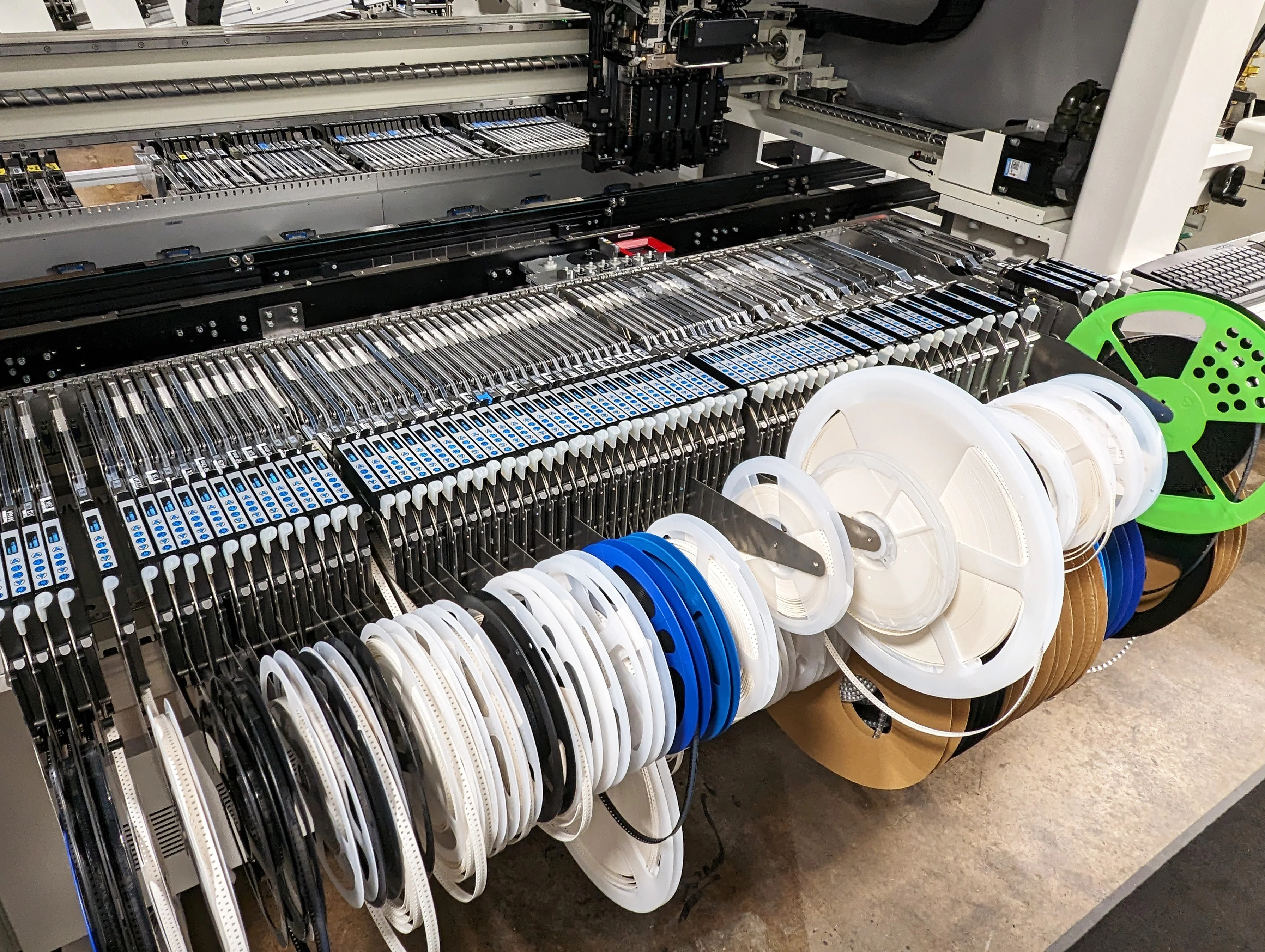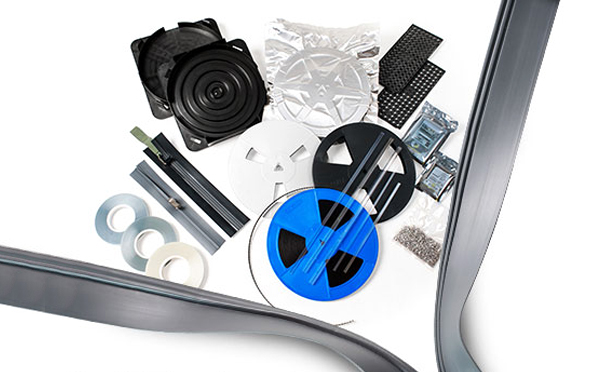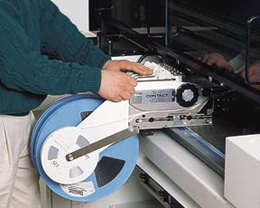Selecting the right component feeder for Surface Mount Technology (SMT) assembly is crucial for achieving efficiency, precision, and cost-effectiveness in PCB production. Whether you're searching for insights on SMT component feeder selection, exploring component feeder types for SMT, understanding SMT feeder advantages, or evaluating pick and place machine feeders, this guide offers a detailed roadmap to help you make informed decisions. At ALLPCB, we understand the importance of optimizing every aspect of your assembly process, and choosing the right feeder is a key step.
In this comprehensive blog, we’ll walk you through the essentials of component feeders, their types, benefits, and how to select the best option for your SMT assembly line. Let’s dive into the details to ensure your production runs smoothly and efficiently.
What Is a Component Feeder in SMT Assembly?
A component feeder is a critical device used in SMT assembly to supply electronic components to pick and place machines. These machines then accurately position the components onto printed circuit boards (PCBs). Feeders hold components in various formats, such as tapes, trays, or sticks, and deliver them to a fixed pickup position for the machine to retrieve. This automation ensures speed, reduces manual errors, and enhances the overall productivity of the assembly line.
Understanding the role of feeders is the first step in SMT component feeder selection. With the right feeder, you can minimize downtime, reduce component waste, and achieve consistent placement accuracy—often within tolerances as tight as 0.01 mm for high-precision applications.

Why Component Feeders Matter in SMT Assembly
Component feeders directly impact the efficiency and quality of your SMT assembly process. A poorly chosen feeder can lead to frequent jams, misfeeds, or component damage, resulting in costly delays. On the other hand, the right feeder ensures seamless operation, even when handling tiny components like 0201 resistors (measuring just 0.6 mm x 0.3 mm) or complex integrated circuits.
The advantages of using optimized SMT feeders include:
- Improved Speed: High-quality feeders can supply components at rates exceeding 100,000 components per hour on advanced pick and place machines.
- Enhanced Accuracy: Feeders designed for specific components reduce placement errors, ensuring precise alignment on the PCB.
- Reduced Downtime: Reliable feeders minimize interruptions caused by jams or misfeeds, keeping your production line running smoothly.
- Cost Efficiency: By reducing waste and errors, feeders save money on component replacement and rework.
With these SMT feeder advantages in mind, let’s explore the different component feeder types for SMT to help you identify the best fit for your needs.
Types of Component Feeders for SMT Assembly
There are several component feeder types for SMT, each designed to handle specific component packaging and assembly requirements. Understanding these options is essential for effective SMT component feeder selection.
1. Tape Feeders
Tape feeders are the most common type used in SMT assembly. They hold components in a continuous tape reel with pockets, covered by a protective film that is peeled back during operation to expose the components for pickup. Tape feeders are ideal for small components like resistors, capacitors, and LEDs.
- Key Features: Available in various widths (e.g., 8 mm, 12 mm, 16 mm) to accommodate different component sizes; often support high-speed feeding.
- Best For: High-volume production with standard SMD components.
2. Tray Feeders
Tray feeders, also known as waffle pack feeders, hold components in flat trays with individual compartments. They are commonly used for larger or more delicate components that cannot be supplied via tape, such as connectors or certain ICs.
- Key Features: Suitable for low-volume or specialized components; often require manual loading.
- Best For: Prototyping or assemblies with unique component shapes.
3. Stick Feeders
Stick feeders supply components packaged in tubes or sticks. They are less common but useful for specific components like DIP (Dual Inline Package) parts that are not available in tape or tray formats.
- Key Features: Simple design; often used for legacy or through-hole components in SMT lines.
- Best For: Mixed assembly lines handling older component types.
4. Bulk Feeders
Bulk feeders handle components that are not pre-packaged in tapes, trays, or sticks. They use vibration or other mechanisms to orient and feed loose components to the pick and place machine.
- Key Features: Flexible for non-standard components; slower than tape feeders.
- Best For: Custom or low-cost components without standard packaging.

Key Factors in SMT Component Feeder Selection
Choosing the right feeder for your pick and place machine feeders involves evaluating several factors to match your production needs. Here’s a breakdown of the critical considerations for SMT component feeder selection:
1. Component Compatibility
Ensure the feeder supports the component packaging and size used in your assembly. For instance, if your design includes 0402 capacitors (1.0 mm x 0.5 mm), you’ll need a tape feeder with an 8 mm width and precise peeling mechanism to avoid jams.
2. Production Volume
For high-volume production, tape feeders are often the best choice due to their speed and reliability. In contrast, tray feeders may suffice for low-volume or prototype runs where speed is less critical.
3. Machine Compatibility
Not all feeders are compatible with every pick and place machine. Check the specifications of your equipment to ensure the feeder integrates seamlessly. Some machines support smart feeders with traceability features, which can enhance process control by tracking component usage.
4. Ease of Setup and Maintenance
Look for feeders that are easy to load and adjust. Complex setups can lead to longer changeover times, reducing overall efficiency. Additionally, consider feeders with minimal maintenance needs to avoid frequent downtime.
5. Cost Considerations
While high-end feeders with advanced features (like automatic tape peeling or vibration control) may improve performance, they come at a higher cost. Balance your budget with the expected return on investment, especially if you’re running a smaller operation.

Advantages of Using the Right SMT Feeders
Investing time in SMT component feeder selection pays off through numerous SMT feeder advantages. Here’s how the right feeder can transform your assembly process:
- Consistency in Production: Properly matched feeders reduce variability, ensuring each component is placed with precision, often achieving defect rates below 50 parts per million (PPM) in optimized setups.
- Scalability: As production demands grow, modular feeders allow you to scale operations without overhauling your entire line.
- Reduced Component Loss: Advanced feeders minimize component damage or loss during feeding, saving costs on expensive parts like microcontrollers or sensors.
- Streamlined Workflow: With reliable pick and place machine feeders, your assembly line experiences fewer interruptions, allowing for smoother transitions between different PCB designs.
How to Optimize Feeder Performance in SMT Assembly
Beyond selection, optimizing the performance of your pick and place machine feeders is essential for maximizing efficiency. Here are actionable tips to get the most out of your feeders:
1. Regular Calibration
Calibrate feeders periodically to maintain accuracy. Misaligned feeders can cause pickup errors, leading to misplaced components or machine stoppages. Calibration jigs can help ensure precision within 0.02 mm for high-density placements.
2. Proper Component Loading
Ensure components are loaded correctly into the feeder to prevent jams. For tape feeders, check that the tape is aligned with the sprocket holes and the cover tape is peeled back evenly.
3. Monitor Feeder Condition
Inspect feeders for wear and tear, especially in high-speed environments. Worn-out parts like gears or peeling mechanisms can compromise performance and should be replaced promptly.
4. Use Feeder Management Software
Some modern SMT lines integrate software for feeder management, allowing real-time monitoring of component usage and alerting operators to potential issues before they cause downtime.

Common Challenges with SMT Feeders and How to Overcome Them
Even with the best SMT component feeder selection, challenges can arise. Here’s how to address common issues:
1. Component Jams
Jams often occur due to improper loading or incompatible feeder settings. Double-check the component size against the feeder specifications and ensure proper alignment during setup.
2. Misfeeds
Misfeeds happen when the pick and place machine fails to retrieve a component. This can be caused by static electricity or debris on the feeder. Use anti-static measures and maintain a clean working environment to mitigate this issue.
3. Slow Changeover Times
Frequent product changes can lead to lengthy feeder changeovers. Opt for quick-release feeders or standardize component packaging to streamline the process.
Future Trends in SMT Feeders and Pick and Place Technology
The world of SMT assembly is evolving rapidly, and feeders are no exception. Emerging trends in pick and place machine feeders include:
- Smart Feeders: Equipped with sensors and connectivity for real-time data tracking, smart feeders improve traceability and reduce errors by up to 30% in some studies.
- Flexible Feeders: New designs accommodate a wider range of component types without hardware changes, ideal for diverse production runs.
- Energy Efficiency: Modern feeders are being designed to consume less power, aligning with sustainable manufacturing practices.
Staying ahead of these trends ensures your assembly line remains competitive and adaptable to future demands.
Conclusion: Making the Right Choice for Your SMT Assembly
Choosing the right component feeder for SMT assembly is a decision that impacts every aspect of your production process, from speed and accuracy to cost and scalability. By understanding the different component feeder types for SMT, weighing the SMT feeder advantages, and carefully considering factors like compatibility and production volume, you can optimize your pick and place machine feeders for maximum efficiency.
At ALLPCB, we’re committed to supporting your SMT assembly needs with high-quality solutions and expert guidance. Whether you’re setting up a new line or upgrading an existing one, take the time to evaluate your feeder options. The right choice today can save time, reduce costs, and improve quality tomorrow.
With this guide, you’re equipped to navigate the complexities of SMT component feeder selection and build a more efficient, reliable assembly process. Let’s create better PCBs together!
 ALLPCB
ALLPCB







